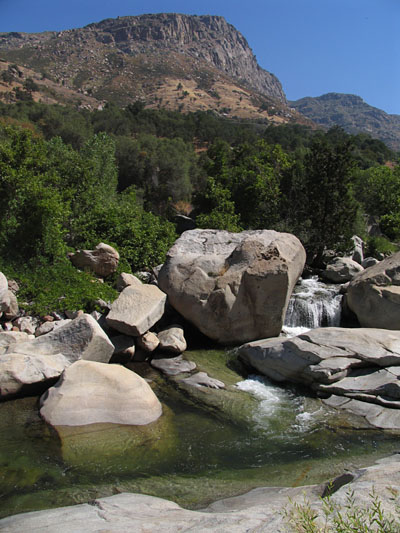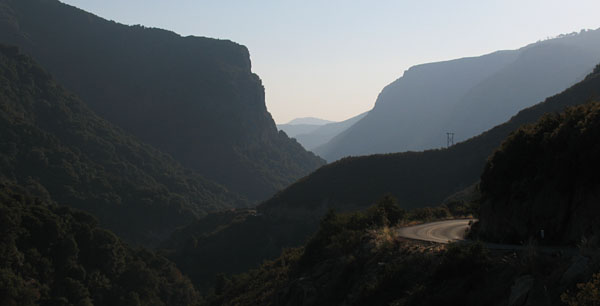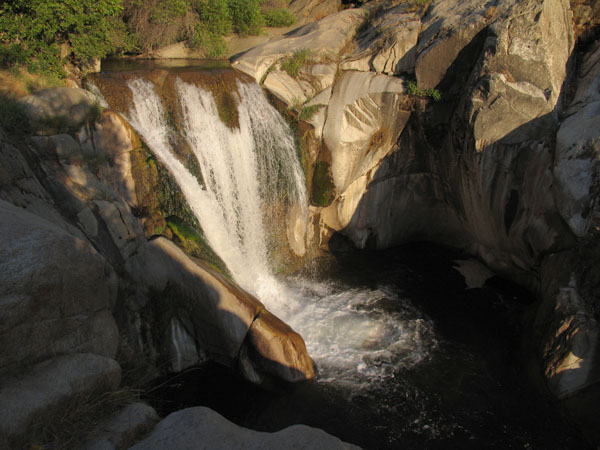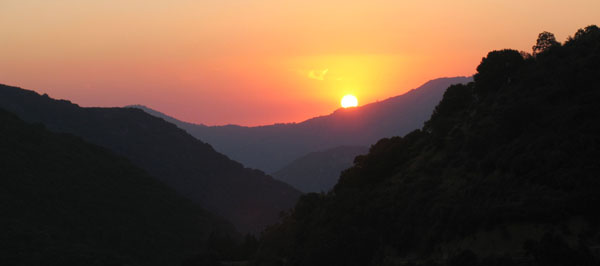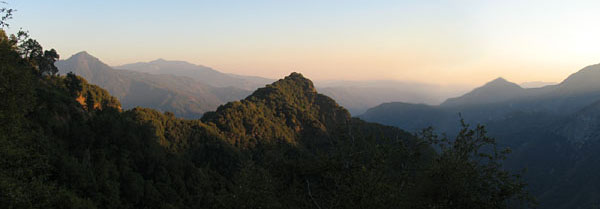
Sequoia

All of the images on this page are photographs that I took during my visit to Sequoia National Forest, California - there is no artwork featured here.
In July of 2006, my friends Curtis and Jill Cost invited me to accompany them for a week in a family-owned cabin at Doyle Springs, a small community of private cabins within Sequoia National Forest, just east of Porterville, California. During that time, we explored the surrounding area and also spent a day at Sequoia National Park. The attractions of this area include the rugged landscape of the Sierra Nevada Mountains, its many streams, rivers and waterfalls - and, of course, the groves of giant Sequoia trees. The trees are found in scattered groves not only within the National Park, but also throughout the surrounding forest reserves. Everything here seems colossal and overwhelming: the trees, the boulders, the panoramic views - all are breath-taking in scale. And the area is hardly benign - rattlesnakes and tarantulas are common, and the mountains are prowled by black bears and mountain lions. Nevertheless, I somehow managed to spend a week here without suffering so much as a single bruise or mosquito bite.
My photos here are divided into two sections: photos from within the National Park, and photos from outside the park.
- In Sequoia National Park -
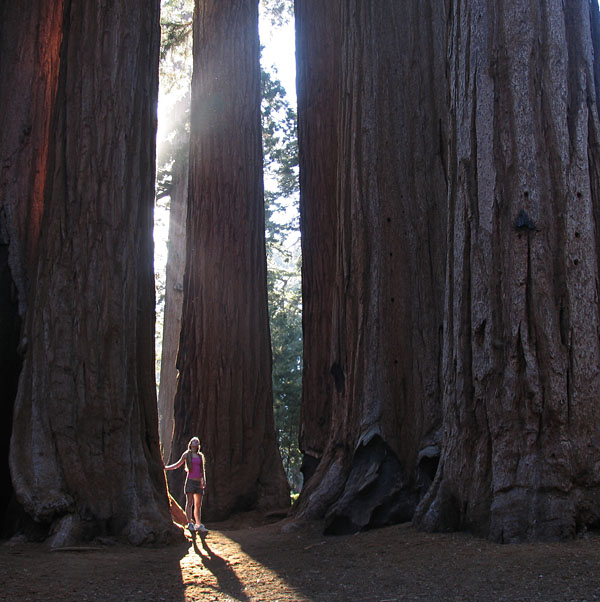
In the Land of the Giants:
Julia Cost standing among Sequoias.
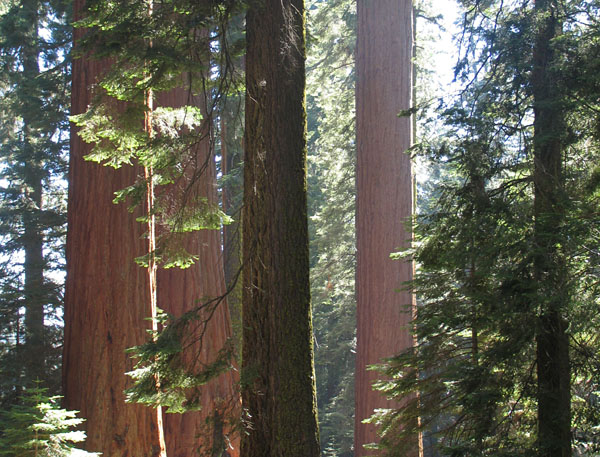
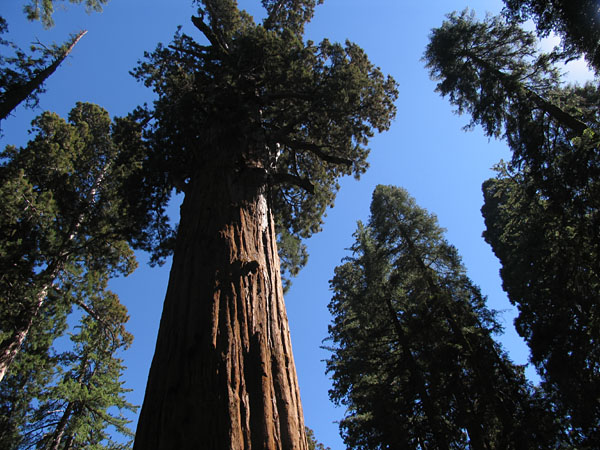
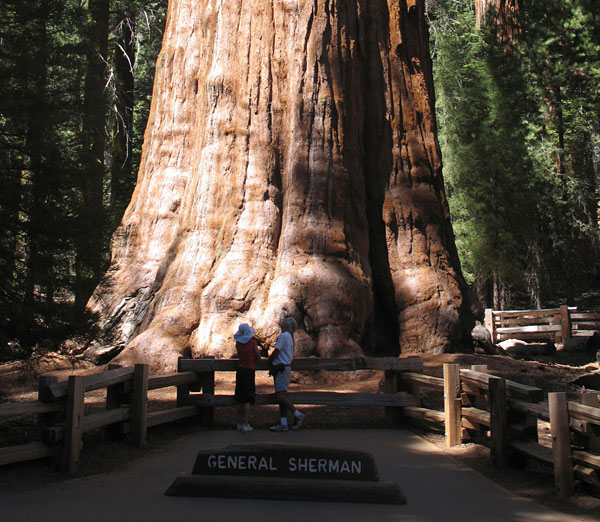
Jill and Curtis at the base of the "General Sherman" tree. In terms of sheer volume, the General Sherman is the world's largest living thing. At its widest point, the base of the tree is more than 30 feet in diameter, and the tree's highest branches are suspended more than 250 feet above the forest floor.
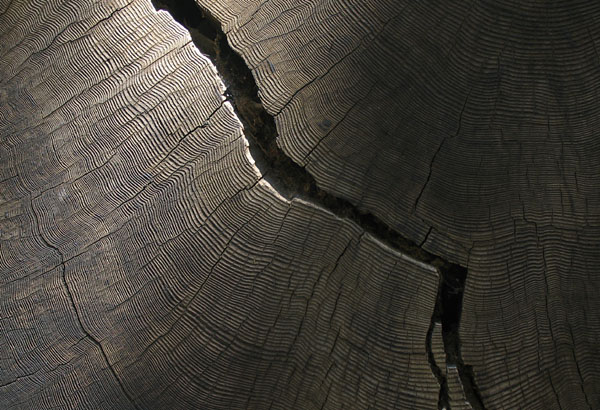
The slow passage of time, etched in wood - tree rings visible in a cut Sequoia reveal that the trees can live for thousands of years. The General Sherman, although the largest of all living Sequoias, is ironically not the oldest - it's a mere 2,100 years in age. Other Sequoias have lived longer, but have failed to achieve such monumental size due to less than perfect growing conditions in their local areas.
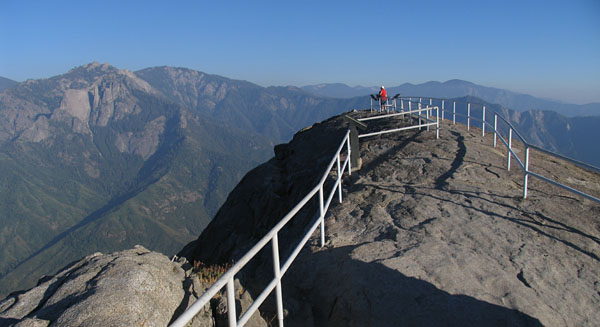
Above: at the summit of Moro Rock, a lookout offers a spectacular view of the mountains.
Below: a view of the Sierras framed by a crevice in Moro Rock.
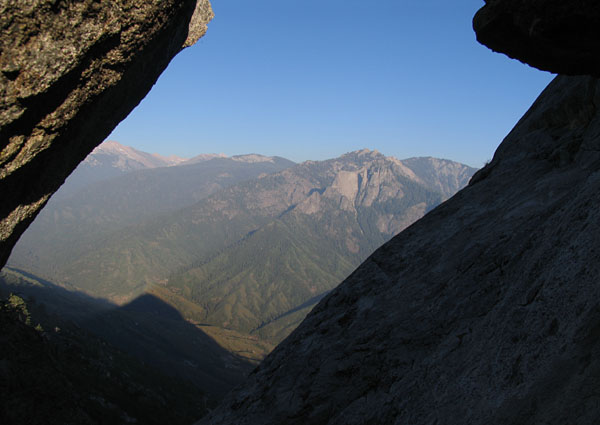
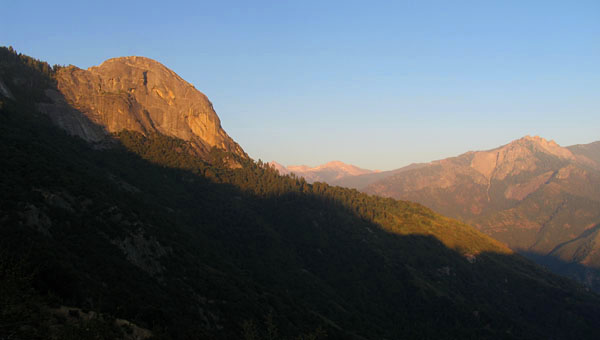
Above: Moro Rock in the light of the setting sun.
Below: last light on the "Castle Rocks."
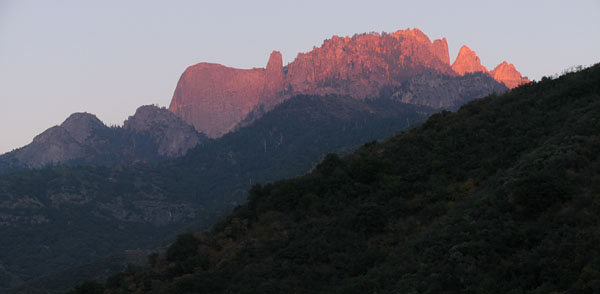
- Areas outside of the National Park -
Sierra Nevada Mountains east of Porterville, California
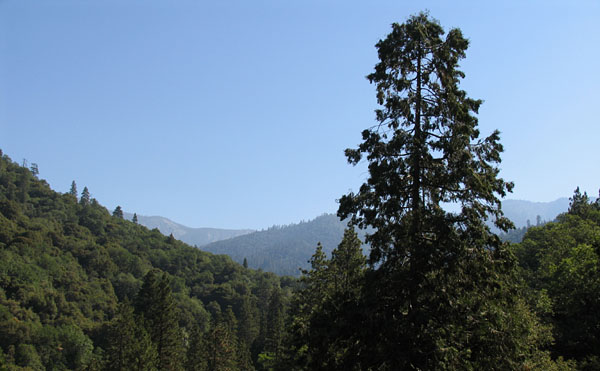
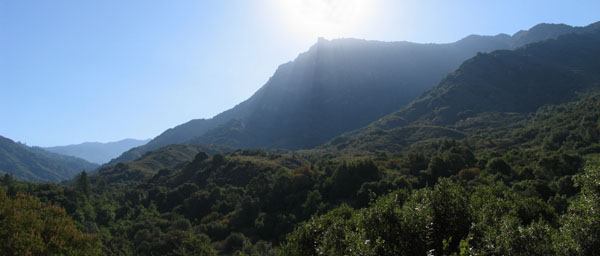
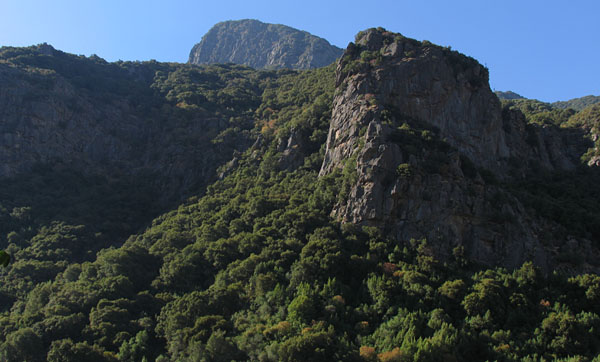
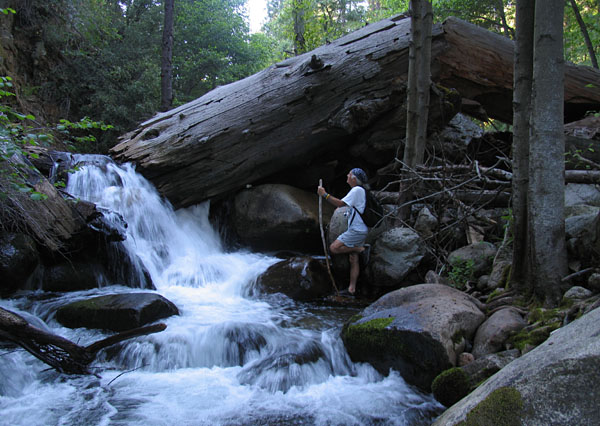
Above: Curtis and I discovered this fallen Sequoia, 6 feet in diameter, in the Tule River upstream from Doyle Springs. It was actually larger than it appears in this photo - to the right, the base of the tree extended some fifty feet or more to the far bank of the river, while the crown of the tree had crashed onto the top of the cliff at the left side of the river, where most of it remained. Huge slabs of wood from this tree could be found in various places downstream. When we first saw it from afar, we convinced ourselves that this obstruction in the river simply had to be a large rock, with a waterfall pouring over it - on closer inspection, we were astonished to discover that it really was a tree.
